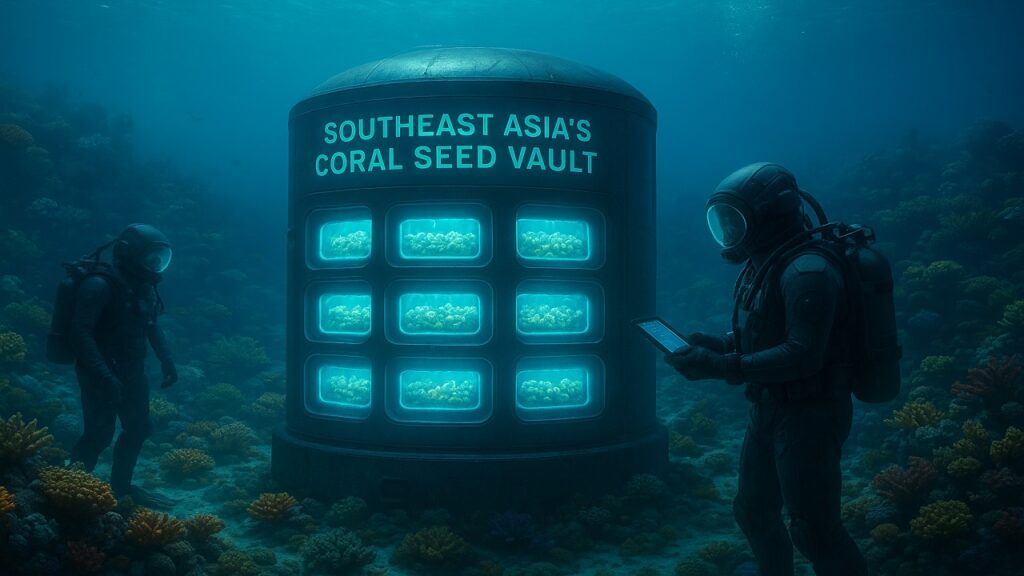Southeast Asia’s Coral Seed Vault: A Step Towards Reef Restoration
Context:

- The Philippines has launched Southeast Asia’s first coral larvae cryobank, a pioneering facility aimed at preserving marine biodiversity.
- The initiative seeks to freeze and store coral “seeds” to protect genetic diversity and revive degraded coral reefs, threatened by climate change, coral bleaching, and habitat loss.
- It is part of a regional effort under the Coral Research & Development Accelerator Platform, involving multiple Southeast Asian nations.
1. What is a Coral Larvae Cryobank?
- A scientific facility that freezes and stores coral larvae at ultra-low temperatures.
- Functions as a “genetic seed vault” for corals, safeguarding biodiversity for future reef restoration or research.
2. Nations Involved:
- The cryobank is part of a regional network, with participating countries including:
- Philippines
- Taiwan
- Indonesia
- Malaysia
- Thailand
3. How It Works:
- Collection of Coral Larvae: Free-swimming reproductive stage collected during spawning events.
- Cryoprotection: Larvae are exposed to cryoprotective solutions to prevent ice crystal formation.
- Vitrification: Rapid freezing in liquid nitrogen at –196°C, turning larvae into a glass-like state without crystallisation.
- Revival Process: Laser-based rapid warming thaws samples within seconds, preventing cell damage.
- Rehydration & Growth: Thawed larvae are rehydrated in seawater, monitored for movement and settling, then transferred to controlled tanks for coral regrowth.
4. Key Features:
- Preserves Coral Genetic Diversity: Maintains coral genotypes for decades, even if species vanish in the wild.
- Climate-Resilient Restoration: Enables reef revival using cryopreserved material, supporting adaptive restoration in warming oceans.
- Research Resource: Provides a long-term data bank for studying coral evolution, reproduction, and stress resistance.
- Collaborative Network: Creates a Coral Triangle Cryobank Network, ensuring shared protocols and data.
- Model Species Approach: Focuses initially on hardy corals like Pocillopora, Acropora, and Galaxia, before expanding to endangered species.
5. Limitations and Challenges:
- Technical Complexity: Larvae are large, lipid-rich, and heat-sensitive, making vitrification challenging.
- Species-Specific Protocols: Each coral species requires different freezing and revival parameters.
- Low Survival Rates: Not all thawed larvae survive or successfully recolonise reefs.
- Infrastructure & Cost: Requires specialized labs, liquid nitrogen systems, and expert training, limiting scalability in developing nations.
Conclusion:
- The Philippine coral larvae cryobank represents a milestone for marine conservation in Southeast Asia.
- It provides a scientific solution to safeguard coral biodiversity, offering tools for reef restoration and climate-resilient conservation.
- Despite challenges such as technical complexity and high cost, it fosters regional collaboration and lays the foundation for long-term protection of threatened coral species.
Source : The Hindu
